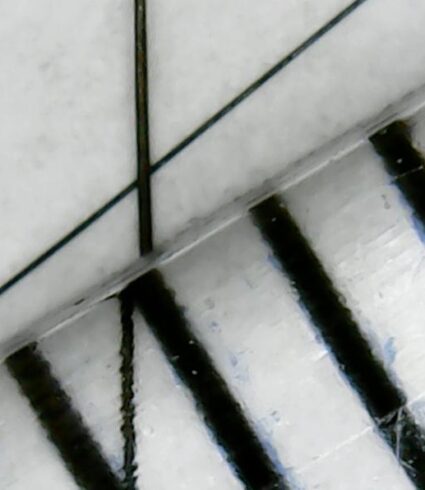Manufacturing

Archaeological Materials
Studying how people have used materials in the past not only sheds light on ancient ways of life but can also help scientists improve materials for modern needsSynthesis and Processing
Local and affordable fertilizers combat undernourishment in AfricaCharacterization
Research sheds light on why razor blades get dull so fast, kicking off work on new steels for longer-lasting bladesDevice Fabrication
Computational fabrics and fibers for “smart clothing” to monitor vital signs and give warnings of health conditionsStudying how people have used materials in the past not only sheds light on ancient ways of life but can also help scientists improve materials for modern needs
Local and affordable fertilizers combat undernourishment in Africa
Research sheds light on why razor blades get dull so fast, kicking off work on new steels for longer-lasting blades
Computational fabrics and fibers for “smart clothing” to monitor vital signs and give warnings of health conditions
New Materials, New Products
Materials science and engineering supports manufacturing by discovering the relationship between energy, matter, and time at the industrial scale. Those relationships affect the production rate and quality of finished or semi-finished goods as well as their cost and environmental impact.
At DMSE, researchers are exploring potash fertilizers for tropical soil. They’ve developed new programmable fibers that could transform clothing into wearable computers. To produce stronger, more damage-resistant metals, they investigated the simple act of shaving to determine how hard steel gets dull quickly after cutting soft hair. And by examining the past through archaeological studies, researchers can uncover insights to inform future manufacturing decisions.
DMSE researchers have developed a digital fiber that could be sewn into clothing and can collect, store, and analyze data about the wearer.
Materials for the Making
Using characterization techniques to study the properties and behavior of different materials—from metals to ceramics to semiconductors—DMSE researchers design materials with specific characteristics and tailor them for a range of applications. This knowledge also enables them to develop better manufacturing processes that use materials more efficiently, reduce waste, and enhance product performance. Researchers are also using computers to design better steel alloys, for example, and improve additive manufacturing, or 3-D printing.
Related Materials and Research Types
Related Faculty and Researchers
Key Publications
Uncovering the effects of interface-induced ordering of liquid on crystal growth using machine learning
Employed machine learning methods and simulations to understand the role of the liquid in the solidification process.
Microstructural and micro-mechanical characterization during hydrogen charging: An in situ scanning electron microscopy study
Developed novel methods to study the influence of hydrogen on metallic materials.
Low-hysteresis shape-memory ceramics designed by multimode modeling
Created a category of shape-memory materials from ceramics that can operate at higher temperatures without sustaining much damage.



























